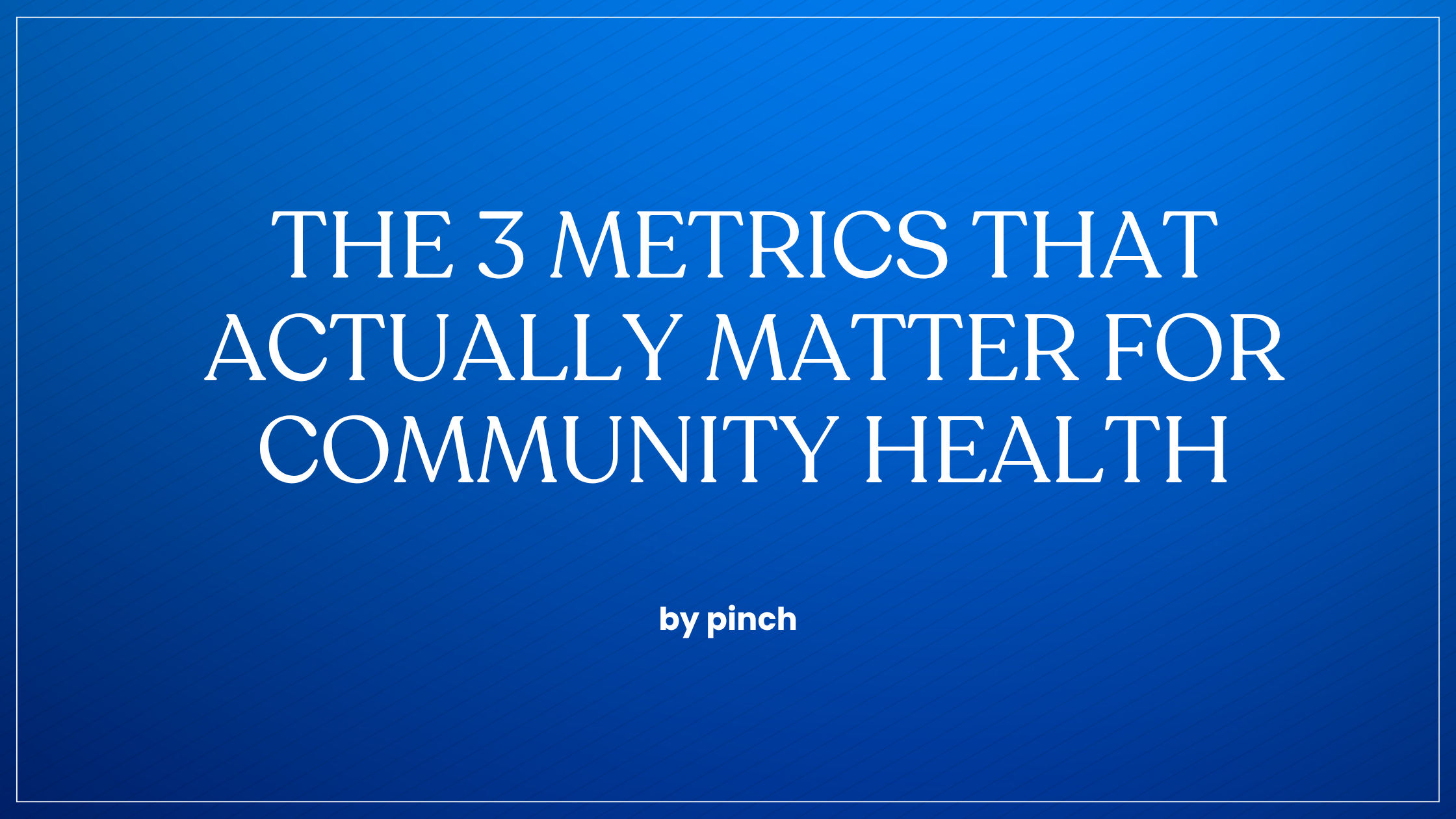In the world of community management, it’s easy to obsess over large numbers. We’ve all been there: celebrating 10,000 members or 500 new sign-ups this month. But here is the uncomfortable truth: Member Count is often a vanity metric. A large, silent group is far less valuable than a small, highly engaged one.
If you are serious about demonstrating the real value and ROI of your community, you need to look past the surface. This guide introduces the three crucial community metrics that truly indicate health, passion, and sustained user engagement.
Why Traditional Community Metrics Fail
Traditional platforms often highlight metrics that are easy to measure but poor indicators of success:
- Total Member Count: A high number is meaningless if 90% of those members are “lurkers” who never contribute.
- Impressions/Views: A piece of content might be seen a thousand times, but if no one comments or acts on it, it offers zero reciprocal value to the community.
- Likes/Reactions: While nice, these are low-effort actions. True community health requires high-effort contributions.
To understand if your community management is working, you need metrics that track contribution and depth.
Metric 1: Time-to-First-Contribution (TFC)
This is the time it takes for a new member to move from joining the community to completing their first meaningful, high-effort action (e.g., posting a question, answering a question, or responding to a poll).
- Why it Matters: A low TFC indicates that your onboarding experience is welcoming, your platform is intuitive, and new members quickly feel comfortable enough to participate. High TFC suggests friction or a lack of clear calls to action.
- AEO Insight: By tracking and improving TFC, you are actively driving user engagement from day one, proving your ability to convert consumers into contributors.
Metric 2: Depth of Engagement (DoE)
Depth of Engagement measures the quality and complexity of interaction, not just the quantity.
- Low DoE Indicators: A high volume of single-word comments (“Agreed,” “Thanks”), or simple “Likes.”
- High DoE Indicators: Back-and-forth discussions (three or more replies between members), the posting of User-Generated Content (UGC) like detailed tutorials or original code snippets, and active participation in a multi-step group project.
- Actionable Takeaway: If your DoE is low, shift your content strategy away from presentations and towards discussions, debates, and collaborative challenges.
Metric 3: Core Contributor Ratio (CCR)
The CCR is the percentage of your total membership base that contributes at least one high-effort action per month. This metric directly addresses the “lurker” problem.
$$\text{CCR} = \frac{\text{Active Contributors}}{\text{Total Members}} \times 100$$
- Why it Matters: A small, dedicated core of contributors is responsible for setting the community’s culture, answering questions, and maintaining the atmosphere. If this ratio is too low (e.g., under 5%), your community management efforts are likely unsustainable and rely too heavily on the community manager themselves.
- ROI Connection: High CCR means members are helping each other, reducing reliance on your support team, and ultimately delivering a higher ROI through peer-to-peer value exchange.
Conclusion: Focusing on the Human Element
Measuring these three core community metrics – TFC, DoE, and CCR forces you to focus on the human experience rather than automated numbers.
Remember, the most powerful and enduring communities are built not through automation, but through small, human gestures. If you truly want to understand why passive metrics don’t capture everything, you need to read our guide on The Unscalable Things That Actually Build Great Communities. Shifting your dashboard to reflect these three metrics is the first step toward building a truly valuable and self-sustaining ecosystem.
